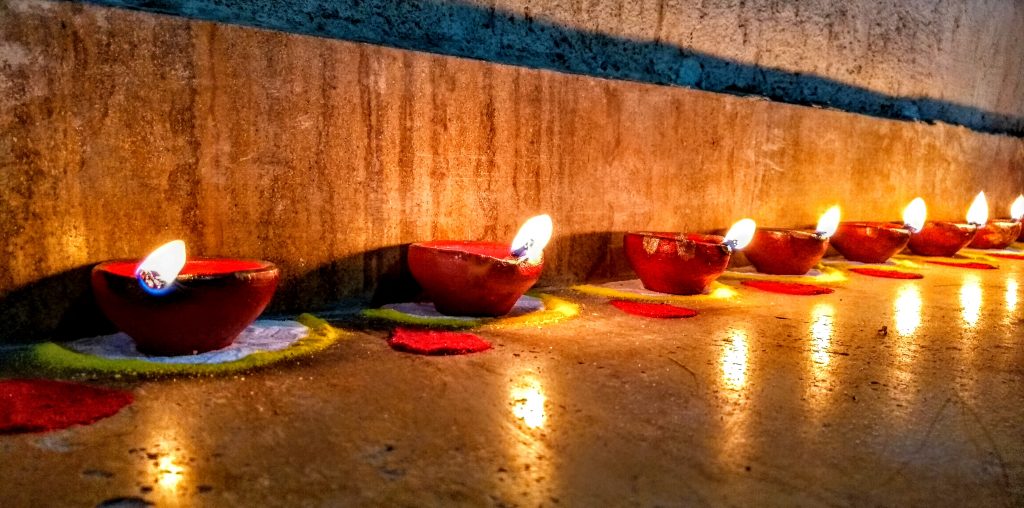
Deepawali, Deepavali, or Diwali is the biggest and the brightest of all Hindu festivals. It is the festival of lights: deep means “light” and avali “a row” to become “a row of lights.” Every Indian home prepares for Diwali in the ancient traditional ways and celebrates the festival with long-established customs.
Diwali is marked by five days of celebration, which literally illuminates the country with its brilliance and dazzles people with its joy. The first day of Diwali celebrations is called Dhanteras. In India, it is believed that buying jewelry (gold or silver) on this day is auspicious. The second day of Diwali is called Narak Chaturdasi, the 14th lunar day. Homes light 14 diyas to ward off evil. Amavasya, the third day of Deepawali, marks the worship of Lakshmi when she is in her most benevolent mood, fulfilling the wishes of her devotees. Diwali is actually celebrated with family and 21 earthen oil lamps are lit. Millions of lamps are lit across the country to dismiss darkness and ignorance while spreading the radiance of love and wisdom. On the 4th day, people celebrate Govardhan pooja, in remembrance of Lord Krishna who, in mythic tales, lifted Govardhan Hill to shelter the people in Vrindavan from heavy rain. The celebration ends with observing Bhai Dooj on the 5th day.
It is an age-old norm to clean homes before Diwali. Indians believe that the Goddess Lakshmi only steps inside if your home is clean. This doesn’t just mean dusting the house. De-cluttering things, painting your house, and re-decoration is also a part of it, depending on your budget.
Mandana painting, drawn on mud walls and floors, is still an integral part of Diwali celebrations in Rajasthan. Mandana paintings welcome gods into the homes and mark celebrations on festive occasions. Women in rural Rajasthan decorate every part of their homes on auspicious occasions like Diwali with them.
It is a unifying event, and it can soften even the hardest of hearts. It is a time when people mingle about in joy and embrace one another. The vibrations produced by the greetings of love, which fill the atmosphere, are powerful. Celebration of Deepavali can rekindle the urgent need of turning away from the ruinous path of hatred.
On this day, Hindu merchants in North India open their new account books and pray for success and prosperity during the coming year. People buy new clothes for the family. Employers, too, purchase new clothes for their employees.
In each legend, myth, and story of Deepawali lies the significance of the victory of good over evil. It is with each Deepawali and the lights that illuminate our homes and hearts that this simple truth finds new reason and hope.
From darkness unto light—the light empowers us to commit ourselves to good deeds and brings us closer to divinity. During Diwali, lights illuminate every corner of India, and the scent of incense sticks hangs in the air, mingled with the sounds of firecrackers, joy, togetherness, and hope.
Diwali is celebrated around the globe. Outside of India, it is more than a Hindu festival; it’s a celebration of South-Asian identities. If you are away from the sights and sounds of Diwali, light a diya, sit quietly, shut your eyes, withdraw the senses, concentrate on this supreme light and illuminate the soul.

